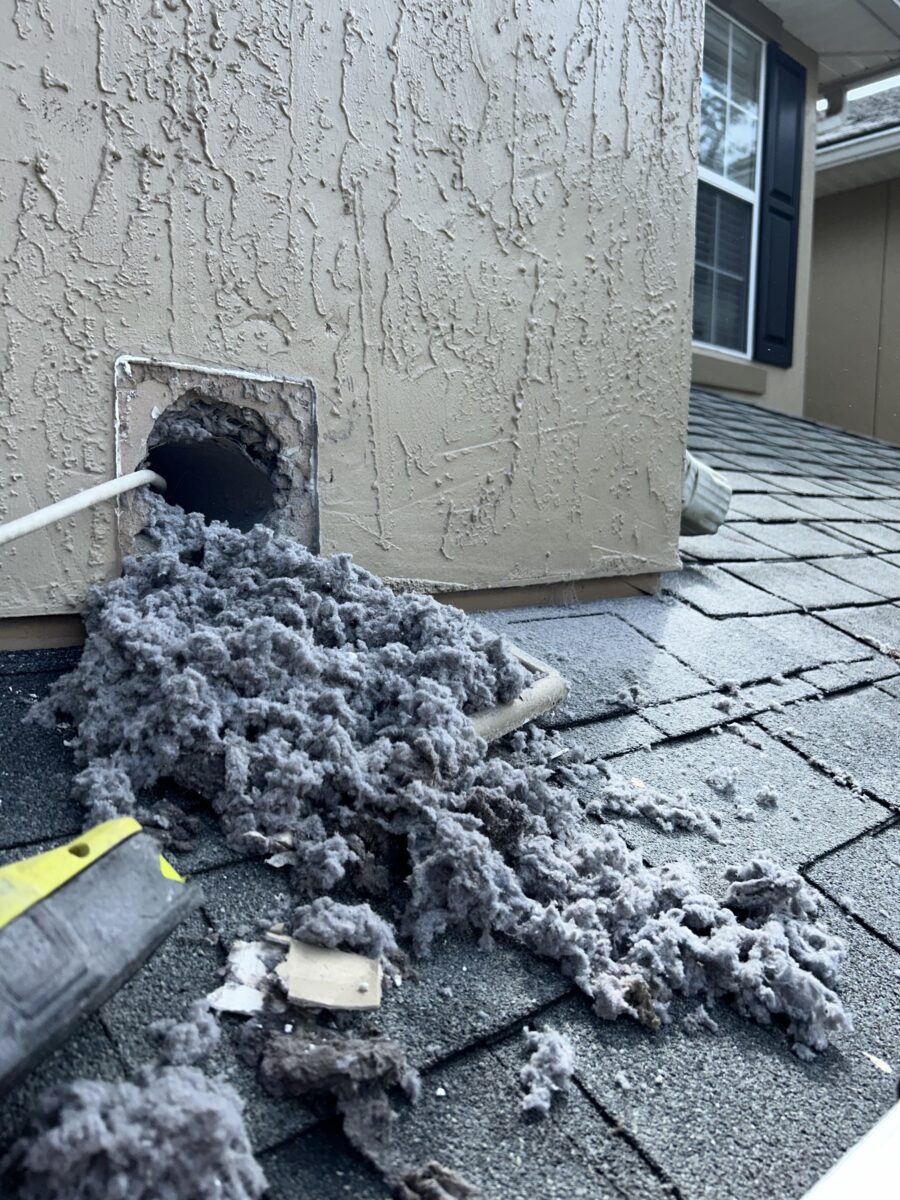
5 Signs of Clogged Dryer Vent
- Your dryer takes much longer than a typical 45-minute cycle to dry.
- Clothes come out of the dryer damp.
- Your dryer feels very hot to the touch while running.
- There’s a musty odor while the dryer is on.
- You see a lot of lint accumulation outside the trap and vent.
How Often Should Dryer Vent Be Cleaned?
Cleaning dryer vent should be priority on annual basis.Most dryers and duct systems require cleaning every one to three years in order to maintain optimum efficiency and the highest level of safety.Rooftop dryer exhaust may need cleaning more frequently.But how often your dryer exhaust need cleaning also depends on: Volume of laundry dried weekly.Pet bedding,type of fabrics and use of dryer sheets.The total length of your dryer exhaust vent system may also be a factor.The air that cycles through your dryer to dry your laundry also becomes laden with lint, and this is carried through the dryer duct and collects there. Over time, if you don’t clean dryer vent from outside, this buildup becomes inefficient and, eventually, dangerous.
Certified Dryer Vent Cleaning Process
If you call in the pros at Jacksonville Dryer Vent & Air Duct Cleaners the technician will disconnect the dryer from the power source and venting system, then use flexible connecting rods with a rotating brush to go through the entire vent as a powerful vacuum system extracts the lint from venting system.
How Often Should Dryer Vent Be Cleaned?
Clothes Dryer Fires
Dryer fires are a common cause of house fires in the United States. According to the National Fire Protection Association (NFPA), there were an average of 15,970 home structure fires involving clothes dryers or washing machines each year between 2010 and 2014. Of these fires, 92% were caused by clothes dryers.
The most common cause of dryer vent fires is lint buildup. Lint is a flammable material that can build up inside the dryer vent and ignite if it comes into contact with a heat source. Other causes of dryer vent fires include:
Blocked vents: A blocked vent can restrict airflow and cause the dryer to overheat.
Faulty dryers: Dryers that are not properly maintained can also overheat and cause fires.
Improper installation: Dryers that are not installed properly can also overheat and cause fires.
Dryer fires can be deadly. In 2014, dryer fires resulted in an average of 13 civilian deaths and 444 civilian injuries. They also caused an average of $238 million in direct property damage.
There are a number of things that you can do to prevent dryer vent fires, including:
Clean your dryer vent regularly. The NFPA recommends cleaning your dryer vent at least once a year.
Inspect your dryers vent for damage. If your dryer vent is damaged, repair it or replace it immediately.
Make sure your dryer is properly installed. If you are not sure how to install your dryer, have a qualified technician do it for you.
Never overload your dryer. Overloading your dryer can cause it to overheat.
Use the correct setting for your load. Using the correct setting for your load will help to prevent the dryer from overheating.
Be sure to empty the lint trap after each use. A full lint trap can restrict airflow and cause the dryer to overheat.
Similarly, don’t use the dryer for items that are not meant to be dried, such as foam or rubber materials. And never leave the dryer running unattended or overnight, as this increases the risk of a fire.
By taking these preventative measures, homeowners can help reduce the risk of dryer vent fires and keep their homes and families safe. If you have any concerns or questions about the safety of your vent system, it’s always a good idea to consult with us.
